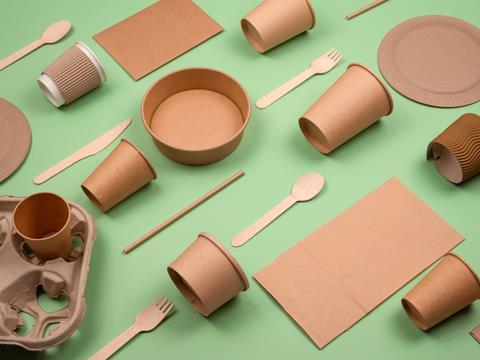
According to a new study conducted by Smithers, worldwide demand for fibre-based packaging is set to rise to $503.4 billion in 2027 at a compound annual growth rate (CAGR) of 3.4%, and the total weight of fibre packaging to 316.3 million tonnes from 2022’s 264.4 million at a CAGR of 3.7%.
In light of sustainability commitments made by retailers and FMCG companies, worldwide legislation aiming to phase out single plastics, and consumers’ understanding that paperboard and other fibre formats tend to be recyclable, Smithers has noted of the increasing popularity of fibre-based packaging design. Its report takes stock of innovations that are currently on the market or in development and highlights the technical difficulties still impeding their development.
The food sector has reportedly seen an uptake in functional barrier coatings to preserve perishable goods and resist grease, oil, and water damage. Specialty barrier paper grades are being utilised in pouch packaging and food service applications, and while they are currently gaining momentum to package fresh produce and confectionary, improvements in coating performance are expected to further expand their range of applications.
Meanwhile, removing aluminium barrier layers and trialling fibre-based bottles are innovations that the report attributes to the beverage industry. It is still facing the stumbling block of relying on polymer-based barrier layers, with the expectation being that future developments will find ways to remove them in material recovery streams without damaging the recovered fibres.
Fibre-based packaging materials are also thought to be taking off in the personal care sector, which seeks to replicate the ‘premium’ visual and tactile experience of existing polymer packaging. Industrial and transit packaging is also seeing an uptake in fibre-based solutions – in dunnage for direct-to-consumer e-commerce channels, for instance.
Moulded pulp and fibre are anticipated to see a strong growth trajectory in the run-up to 2027, although all fibre packaging types are expected to grow in demand. This is currently being accommodated by multiple ongoing line expansions, according to Smithers.
The full report is available to purchase now.
Its findings follow Smithers’ previous recognition of recovered pulp, metal, and glass as positive progress within the packaging industry in a report outlining long-term solutions to improving the sourcing, manufacture, use, disposal, and recovery of packaging over the next decade.
Earlier still, Cepi released its own report suggesting that the paper and board industry was ‘bouncing back’ following the impacts of the COVID-19 pandemic. It noted the popularity of fibre-based solutions in home delivery boxes, from Smurfit Kappa’s recyclable corrugated cardboard insulation packs for Mindful Chef to Ranpak’s recyclable cold chain solution for e-commerce food delivery.












No comments yet